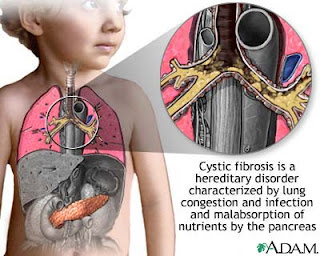Sunday, November 28, 2010
Metabolism
The basic function of the metabolism is to break down food and thus into energy through a set of chemical reactions. Organisms that have high metabolisms can break down food easily and quickly. They also tend to have a low body mass because they are able to burn things down so quickly. Those with a low metabolism tend to have more body weight because they are unable to break down food as easily and thus store it away as fat. Metabolic reactions include ATP. ATP or Adenosine triphosphate, helps cells carry out their functions and is thus the main provider of energy to all organisms. Occasionally there are disorders with metabolism, one we have researched is PKU or phenylkeonuria. PKU is an inherited disorder and effects the way the body processes proteins. People with phenylketonuria have a deffective enzyme, PAH, a crucial metabolic enszyme. Without this enzyme the body can have very high phenylalanine levels which can have severe long term effects such as mental retardation or epilepsy. Some symptoms of PKU, if undetected, will often be lighter skin and hair, an odd odor, mental issues, epilepsy, and even an abnormally sized skull. Newborns are scanned for high levels of PKU in their blood if there is any detection they must have further blood tests performed to see if it is PKU or BH4, which causes similar symptoms. PKU appeares in 1 in 10,000 births in causasions and East Asians this ranges in other ethnic groups. PKU is a treatable condition, PKU is found in proteins of food. So those with PKU most sustain a low protein diet the diet is supplemented instead with articial protiens without phentlanine. This diet can allow normal developemnt and growth as a child. I am terribly thankful that I dont have this disorder or any issues with my metabolism and Im even more thrillled that I have a high metabolism and can eat A LOT... beacuse...I like food
Monday, November 15, 2010
Fluid Mosaic Model
The Fluid Mosaic Membrane Molecule models we created in class gave me a good idea of how they are made up and what they look like, obviously. However, as far as what everything does I'm a little vague on and thus I felt like an utter moron taking the quiz. The top and bottom layers of the molecule are made up of phospholipids. Phospholipids. Act as building blocks of the biological cell membranes in virtually all organisms, participate in the transduction of biological signals across the membrane. They also act as efficient store of energy as with triglycerides and play an important role in the transport of fat between gut and liver in mammalian digestion. The little tendrils that are attached to the phospholipids are fatty acids. Around the "tails" is cholesterol. The transmembrane protein is a protein molecule that is attached to, or associated with the membrane of a cell or an organelle. And finally the glycoproteins are proteins that contain oligosaccharide chains covalently attached to polypeptide side-chains. All of these are components in the functions of the fluid mosaic membrane model.
It's All About the Mucus!
We recently began studying on Cystic Fibrosis. It's a rather disgusting disorder but since I could relate it to real live people I was able to retain the information and my attention span a bit better than I think I have been able to with other subjects in Biology. Cystic Fibroses is a disease that has to do with a mutant gene. In order to contract it the gene must be passed down from both parents. Cystic Fibrosis is basically having too much mucus in your system, ew! The disease is typically diagnosed as a baby, and can be tested through a sweat test. Parents are taught how to control their child with simple ways on how to loosen the mucus and force the child to cough it up. Those with the disease must drink plenty of fluids, stay away from smokey areas, exercise, basically anything that will keep the mucus loose and easy to cough up. Though there is no actual diagnosis for this disease there are treatments that help such as therapy, medications, and sometimes even surgical procedures.
Subscribe to:
Comments (Atom)

